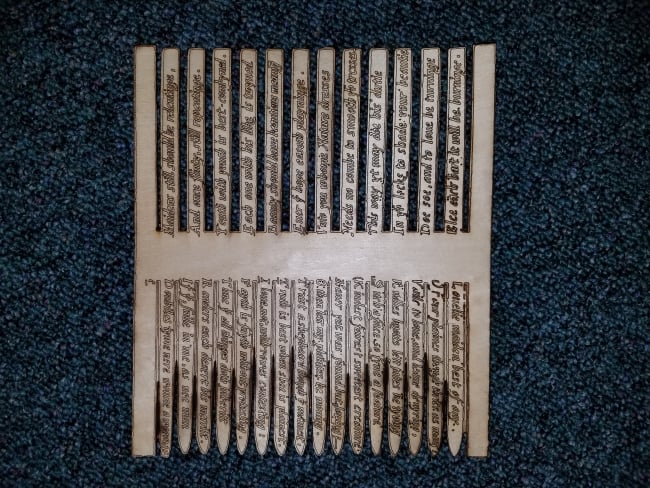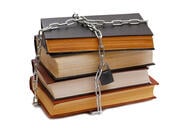You have /5 articles left.
Sign up for a free account or log in.

Graduate student Jonathan Fitzgerald in Erika Boeckler's literature courses at Northeastern used 3-D printing to create physical versions of 17th-century poems.
Erika Boeckler/Northeastern University
Technology comes up in virtually every discussion about the modern classroom experience. “Inside Digital Learning” wants to show you how it’s being applied on the ground.
In our new series, “How Technology Enhances [fill-in-the-blank] Learning,” we’ll explore innovative uses of digital tools in a given discipline. This time: literature.
Creating Objects to Illuminate Words
Aaron Santesso, a professor of literature at Georgia Institute of Technology, wanted students to think about “the connections between design, production and communication within an aesthetic and historical context.” He also hoped to help students break out from established rules of composition and production.
During a course on 17th-century literature he taught last year, Santesso asked students to use lasers -- specifically a device called a Trotec Speedy 300 Laser Cutter -- to create replicas of medallions that were used during that time period as mass communication devices, celebrating military victories and commencing political careers.
The project offered students the opportunity to incorporate text into the produced object, to reflect on the nature of digital word processing as it differs from more painstaking forms of letter creation and to work within an established framework of limitations (the size of the object, etc.).
In other classes, 3-D printing can challenge students in similar ways. Erika Boeckler, assistant professor of English at Northeastern University, spurred one of her graduate students, Jonathan Fitzgerald, to create physical representations of pattern poems. The goal, Boeckler said during a panel earlier this month at the Modern Language Association meeting in New York, is to help students grasp tricky concepts like textual materiality.
The process involved a succession of programs: SketchUp for drafting the image, MeshLab for creating a 3-D framework, Processing for turning the image into a height map and Adobe Photoshop and Illustrator for modifying and creating final images. Fitzgerald said during the MLA panel that the “fits and starts” he experienced helped him understand the poem’s function as much as the final products.
Connecting to a Wider Audience
For generations, students have bemoaned that the hard work that goes into writing essays is for naught, because the final products reach an audience of one.
Nancy Comorau, associate professor of English at Ohio Wesleyan University, asked her students to write a reading guide -- now available online -- in a particular subject area of interest, such as black British music or queer literary culture. In addition to assembling writing materials and writing for a broad array of readers, students got a basic education in web design and layout.
“I've been very happy with the work they've done, but the positive I hadn't quite anticipated was the pride they'd display in their work,” Comorau told “Inside Digital Learning.” “We've met during the final exam period to hold a ‘launch party’ for their new site, and they've really enjoyed showing off what they've built and talking about the choices they made.”
Putting Thoughts Into Action
Digital tools can help students see more traditional learning materials in a new light, as in a course on literature by undocumented immigrants taught by Allison Fagan, associate professor of English at James Madison University in Virginia. Students there often don’t have a well-defined sense of the dynamics at play at the U.S.-Mexico border, and Fagan wanted them to gain a deeper understanding of the assigned books.
During previous iterations of the course, students used Google Earth to map character journeys. But the tool proved clunky and convoluted. Esri’s Story Maps tool was a better fit, Fagan said, and students used it to make more sophisticated arguments about the impact of a character’s location on their experience. The semester-long project also involved conducting background research into historical events and placing them on the same map, to illustrate the connections between reality and fiction.
By the end of the course, five or six students out of 20 said they had read the book five or six times to ensure they were familiar with nuances that became part of their projects. Fagan said some students struggled at first to adjust to the experimental nature of the assignment, but by the end, they were itching to complete more sophisticated tasks than the program would allow. In future semesters, Fagan might team up with an instructor from a more tech-oriented discipline to capitalize on the students’ interest in digging deeper.




